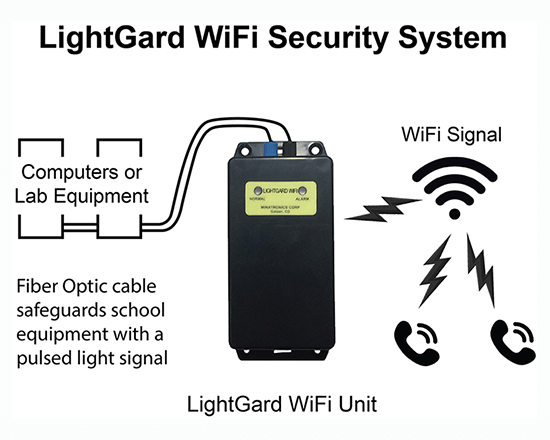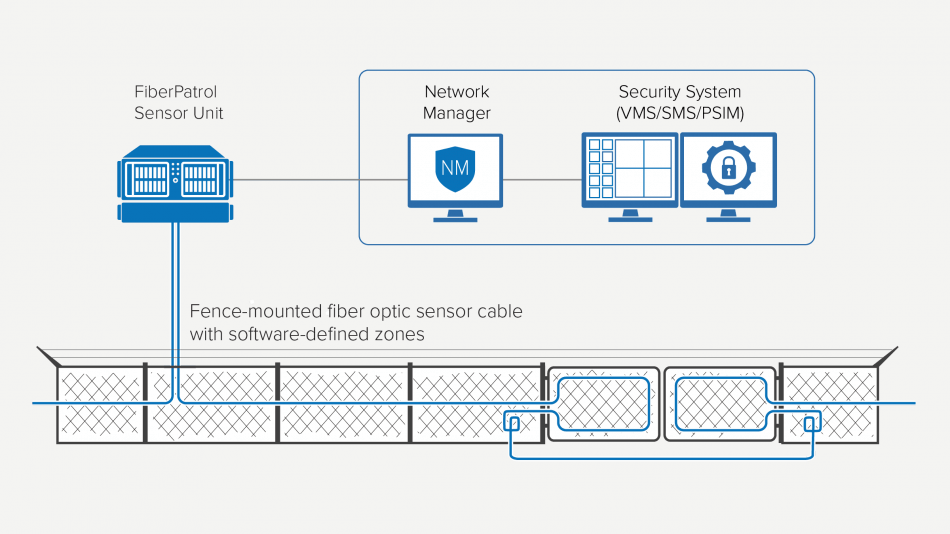Why Fiber Optic Security Systems Are the Future of Defense
The shift to fiber optic safety systems marks a substantial advancement in the world of protection, driven by their remarkable information transmission abilities and resilience to outside disturbances. As the landscape of security evolves along with emerging technologies such as AI and IoT, the potential for fiber optics to improve and redefine safety and security infrastructures ends up being significantly apparent.
Advantages of Fiber Optic Solutions
Among the main benefits of fiber optic systems is their remarkable bandwidth capacity, which facilitates the transmission of huge quantities of information over fars away without substantial loss. This characteristic is particularly beneficial for safety applications that need the continual monitoring and transfer of high-definition video feeds, sensing unit data, and other essential details. Optical fiber can accommodate the expanding demands of contemporary safety systems, making sure that information stays undamaged and dependable.
In addition, fiber optic cables are much less susceptible to electro-magnetic interference, which can be a considerable concern in settings with numerous digital gadgets. This resistance improves the stability of the information being transmitted, thereby lessening the threat of data violations or system failures. Furthermore, fiber optic systems are naturally more secure than standard copper cable televisions, as using a fiber optic line without detection is extremely challenging.
The sturdiness of fiber optic cables also adds to their allure. They are immune to ecological factors such as wetness and temperature level variations, decreasing upkeep prices and raising system longevity. Generally, these benefits placement fiber optic systems as a robust and reliable option for modern protection infrastructures, making sure trustworthy and secure data transmission.
Boosted Information Transmission Speed

The capability to transfer huge amounts of data rapidly assists in the seamless integration of high-def video clip feeds and progressed analytics. Protection systems can currently process and evaluate details in real-time, boosting action times and situational recognition. Additionally, fiber optic links support longer transmission distances without destruction of signal high quality, making them ideal for large safety and security networks.
The enhanced rate of fiber optic systems not only boosts the effectiveness of safety and security procedures however also reduces latency. This is specifically vital in crucial situations where timely decision-making can protect against protection violations or alleviate potential dangers. As organizations remain to focus on security and effectiveness, the demand for quick and dependable information transmission will definitely strengthen fiber optic systems as a keystone of contemporary security infrastructure.
Resistance to Interference
Fiber optic security systems continually show extraordinary resistance to electromagnetic interference, a crucial advantage in environments vulnerable to digital sound. Unlike conventional read the full info here copper cable televisions, which can be negatively impacted by magnetic fields, superhigh frequency interference, and other kinds of electrical disruption, fiber optic cords utilize light to transmit data. This intrinsic property makes certain that the signals continue to be clear and unaltered, regardless of bordering electronic task.
Making use of glass or plastic fibers in fiber optic innovation develops a barrier versus interference, enabling for trusted data transmission also in difficult circumstances such as industrial facilities, city locations with high digital website traffic, or places near radio towers. This particular considerably reduces the likelihood of signal deterioration or loss, making fiber optic systems particularly appropriate for security applications where integrity and precision of information are extremely important.
In addition, this resistance to interference enhances the total performance and dependability of protection systems, ensuring that monitoring and alert systems function flawlessly. In a globe why not look here where safety is significantly endangered by advanced modern technologies, the strength of fiber optic systems stands apart as an essential feature, strengthening their status as a vital element of modern safety and security facilities.
Cost-Effectiveness In Time
Significant expense financial savings can be attained with time with the execution of fiber optic safety systems. While the initial financial investment may seem higher contrasted to conventional copper-based systems, the lasting monetary advantages emerge with reduced functional and maintenance prices (fiber security). Fiber optic cable televisions are naturally much more resilient and less susceptible to ecological elements, which converts to lower replacement and repair work expenses over their life expectancy
Moreover, fiber optic systems require less power to run, which further decreases energy costs. Enhanced data transmission capacities permit fewer repeaters and amplifiers, minimizing devices investment and streamlining installation processes. The scalability of these systems also contributes to cost-effectiveness, as organizations can broaden their protection facilities without incurring considerable additional costs.
An additional factor to think about is the raised effectiveness in tracking and reaction capacities that fiber optics give. Improved real-time data transmission can lead to quicker event action times, potentially mitigating losses and responsibilities related to protection violations. Altogether, the long-lasting benefits of fiber optic security systems not just justify the initial expenditure yet likewise position them as a financially sensible option for companies looking for robust security remedies.

Future Technologies in Security
Advancing technologies are set to change protection systems, integrating expert system (AI) and device knowing to enhance hazard detection and reaction capabilities. These innovations will certainly enable safety and security systems to evaluate large quantities of information in real-time, identifying patterns and anomalies that show potential risks. This aggressive strategy will allow faster decision-making and much more effective incident actions.
Furthermore, the unification of the Web of Things (IoT) is leading the way for interconnected protection devices, offering comprehensive monitoring and surveillance. Smart sensing units can communicate information about ecological modifications, while automated signals can notify protection employees immediately of dubious tasks.
In addition, the advancement of biometric technologies will certainly even more reinforce safety systems. Facial recognition, finger print scanning, and retina identification are coming to be much more sophisticated, providing layers of authentication that are tough to bypass.
Final Thought
In verdict, fiber optic safety systems represent a considerable advancement in security modern technology, supplying unequaled information transmission speed, resistance to electro-magnetic interference, and long-term cost-effectiveness. As the need for innovative protection solutions continues read more to grow, the integration of optical fiber with arising innovations such as AI, IoT, and biometrics will certainly better enhance safety and security frameworks (fiber security). The mix of these developments will make sure a more secure and receptive atmosphere, solidifying optical fiber as a keystone of future protection systems